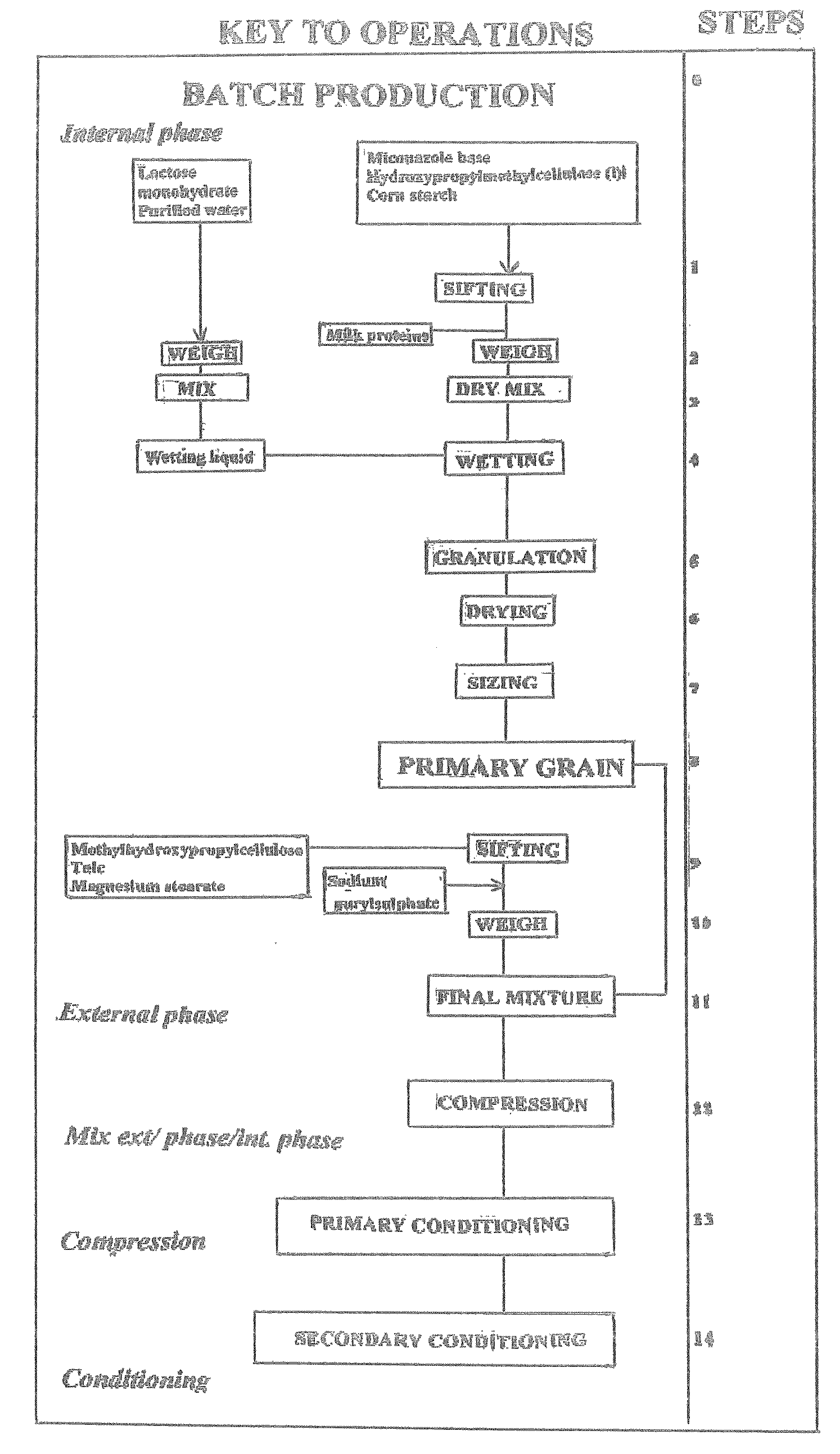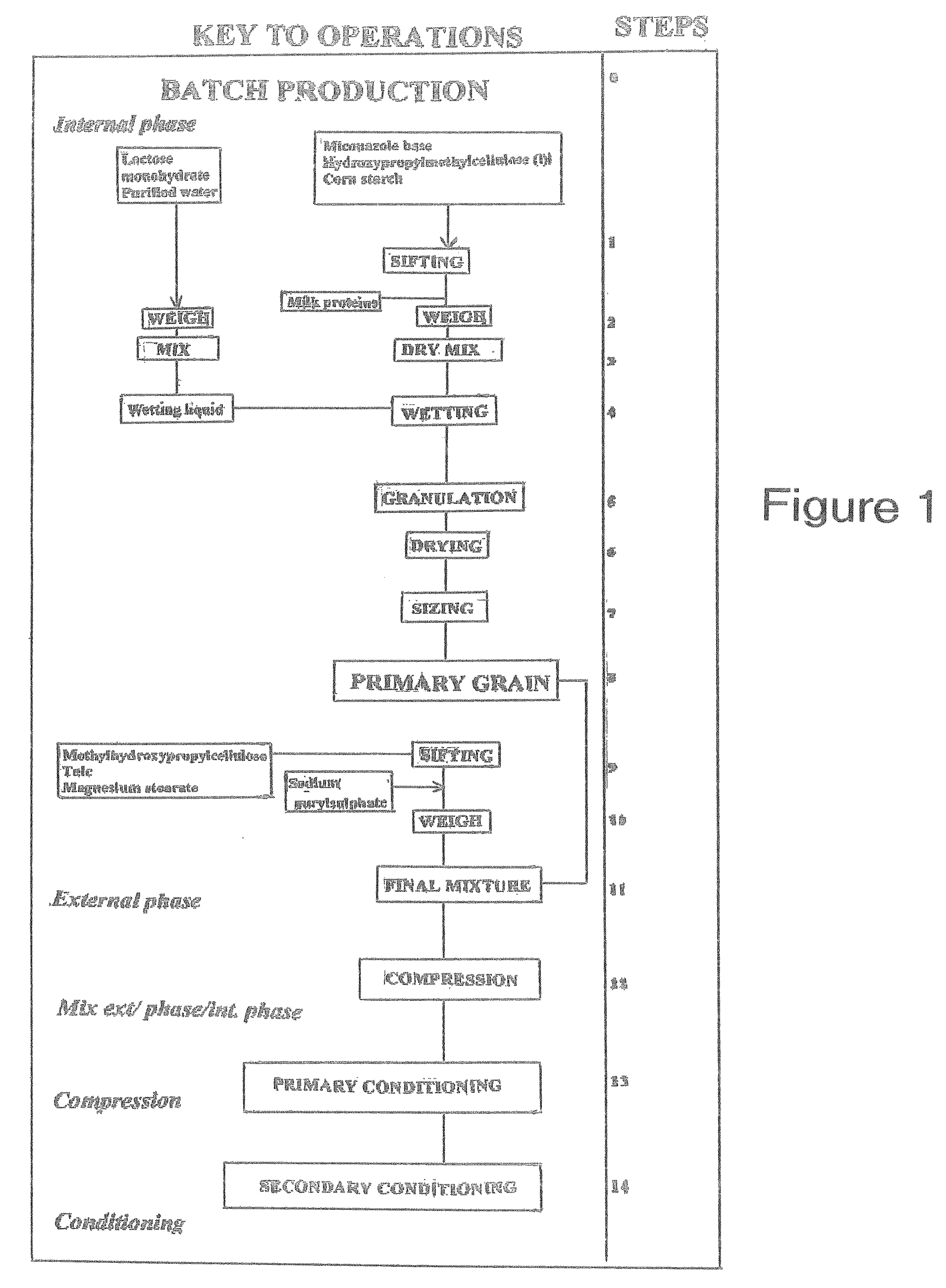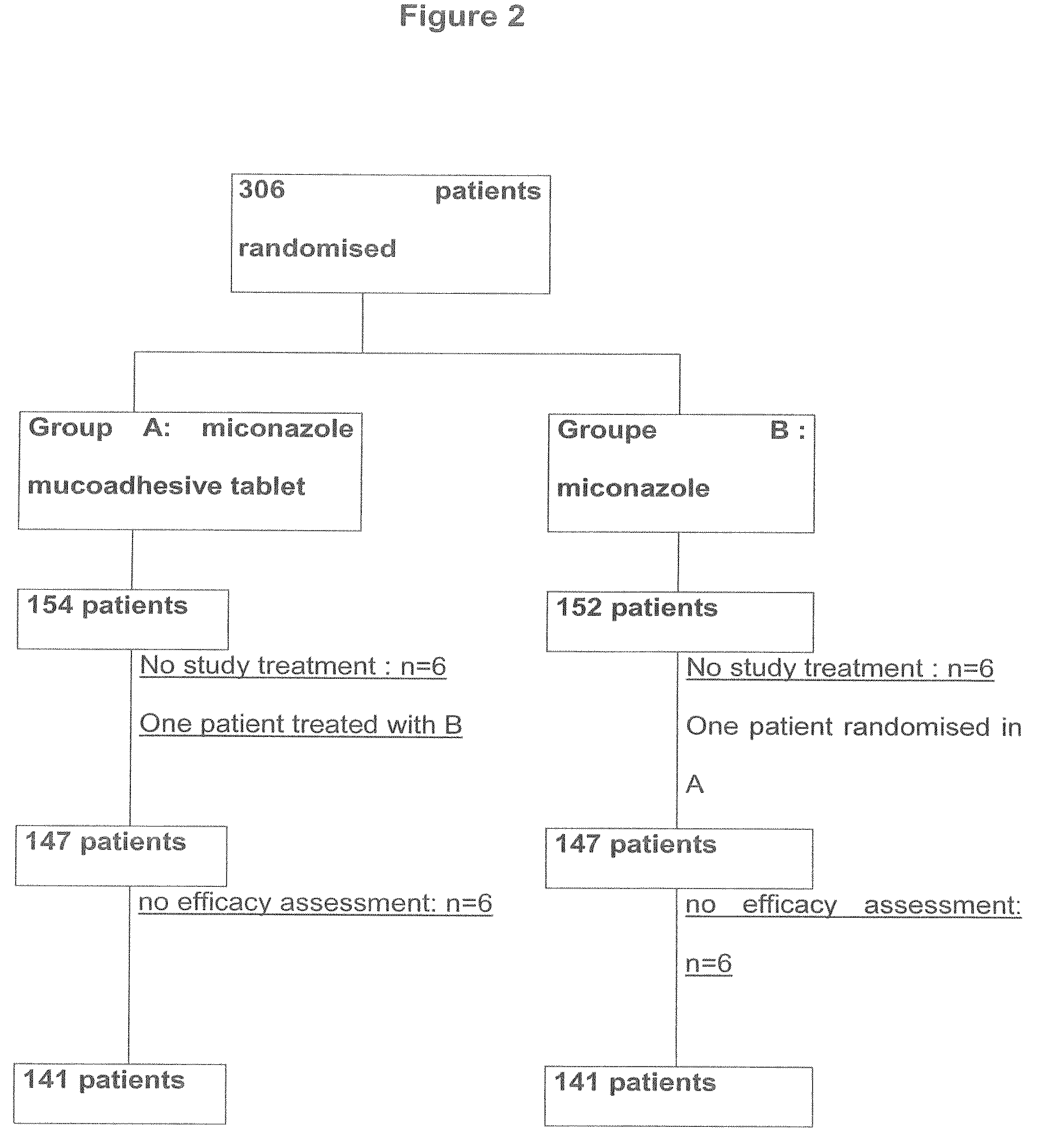Treatment of oropharyngeal candidiasis in cancer patients
a cancer patient and oropharyngeal candidiasis technology, applied in the field of cancer patients' oropharyngeal candidiasis treatment, can solve the problems of systemic infections, long time-consuming and labor-intensive, and affect oral hygiene, and achieve the effect of preventing the recurrence of severe oral lesions
- Summary
- Abstract
- Description
- Claims
- Application Information
AI Technical Summary
Benefits of technology
Problems solved by technology
Method used
Image
Examples
example 1
Preparation of a Tablet Containing 50 mg of Miconazole
[0084]A flow chart for the preparation of the miconazole tablet is shown in FIG. 1. 50 mg of miconazole base (or 100 mg for a 100 mg tablet) was mixed with 9.2 mg of corn starch and 20.5 mg of methylhydroxypropylcellulose.
[0085]The mixture was then homogenized by sieving and 27.43 mg of LR85F milk proteins was added and mixed with the initial mixture. This latter was then wetted with a mixture of lactose monohydrate (lactose 200 Mesh in an amount of 0.39 mg in purified water). During batch production, all of the wetting liquid was introduced, namely 0.39 mg per 115 mg tablet, representing 0.34% by weight of total constituents. The wetting step was followed by a granulation, drying and sizing step carried out under conventional conditions, to obtain the primary grain.
[0086]A mixture of excipients was added to this primary grain: talc, magnesium stearate, methylhydroxypropylcellulose, to which sodium laurylsulphate in a concentrati...
example 2
Scale-Up 10 kg Batch
[0091]Industrial scale-up was carried out with the same composition as set forth above in Table I to produce a 10 kg batch.
[0092]On a large scale, the method of FIG. 1 can be adapted and simplified by introducing a fixed quantity of lactose, without compensating with metolose; and by carrying out a previous calculation of the quantity of water to be introduced, which meant that the grain appearance could be ignored, rendering the method adaptable to a closed vessel apparatus.
example 3
Patient Selection
[0093]Male and female patients aged >18 years having undergone radiation therapy for head and neck cancer with clinical signs and symptoms of oropharyngeal candidiasis who had either a first episode or a relapse of oral candidiasis were eligible for the study. Oropharyngeal candidiasis was confirmed by direct mycological examination and positive fungal culture with >100 colonies.
[0094]More specifically the direct mycological examination involved taking samples form the mouth by scraping, culturing them and microscopically examining the cultures for the presence of Candida albicans and Candida non-albicans.
[0095]Patients were excluded if they had systemic or disseminated candidiasis outside the oropharyngeal cavity, had received systemic antifungal treatment within the last 14 days, were receiving concomitant treatments that may interfere with miconazole (anticoagulants, hypoglycaemic sulfonylureas), had liver failure defined as AST and / or ALT >5 times the upper limi...
PUM
| Property | Measurement | Unit |
|---|---|---|
| salivary concentrations | aaaaa | aaaaa |
| time | aaaaa | aaaaa |
| time | aaaaa | aaaaa |
Abstract
Description
Claims
Application Information
 Login to View More
Login to View More - R&D
- Intellectual Property
- Life Sciences
- Materials
- Tech Scout
- Unparalleled Data Quality
- Higher Quality Content
- 60% Fewer Hallucinations
Browse by: Latest US Patents, China's latest patents, Technical Efficacy Thesaurus, Application Domain, Technology Topic, Popular Technical Reports.
© 2025 PatSnap. All rights reserved.Legal|Privacy policy|Modern Slavery Act Transparency Statement|Sitemap|About US| Contact US: help@patsnap.com



